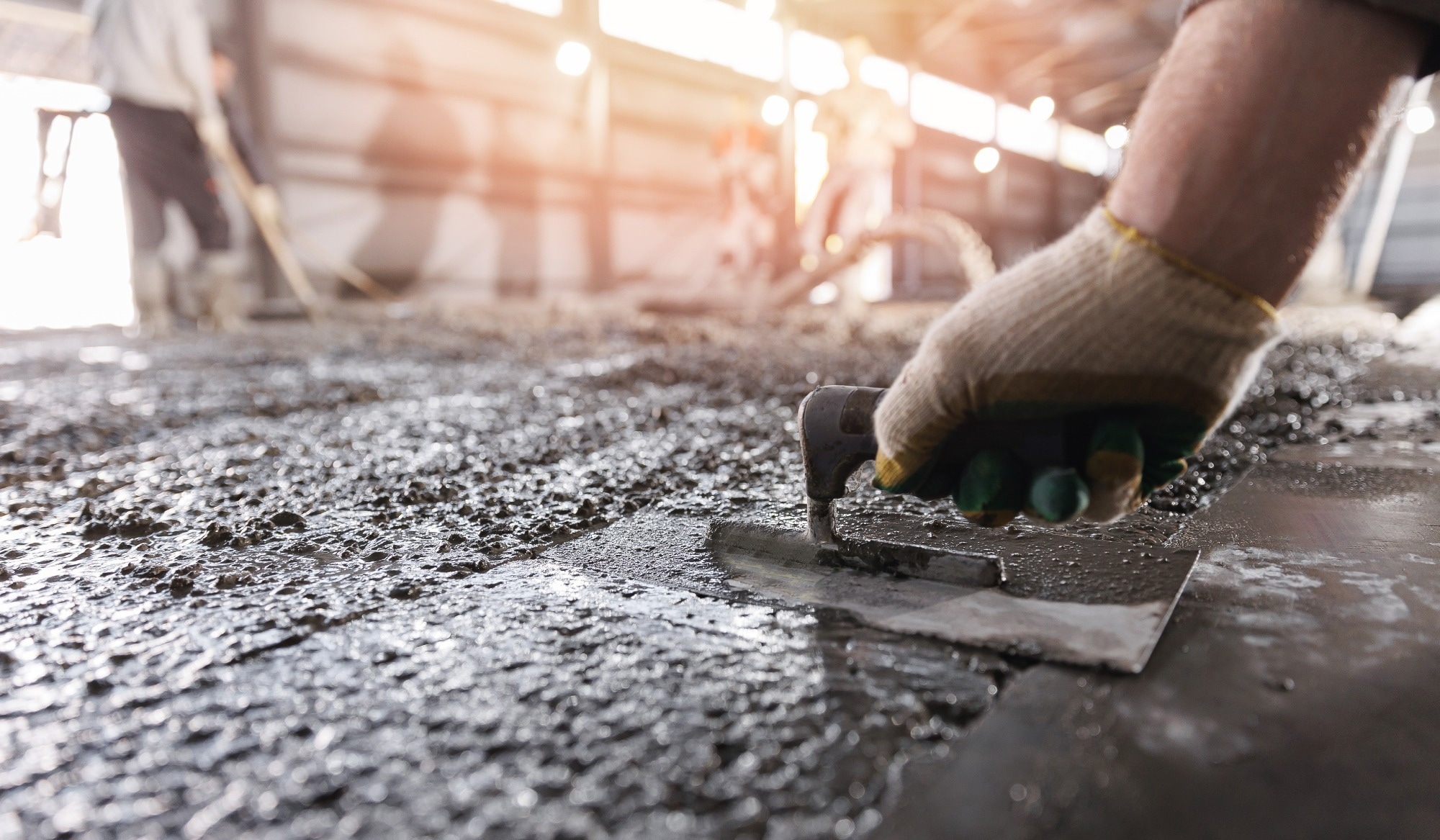 By Nidhi DhullReviewed by Susha Cheriyedath, M.Sc.Nov 27 2024
By Nidhi DhullReviewed by Susha Cheriyedath, M.Sc.Nov 27 2024A recent study in Buildings highlights the development of a novel marine alkali paste (MAP) that combines seawater (SW), recyclable particles from paste specimens (RPPs), and alkali agents such as NaOH (NH) and Na2O·3SiO2 (NS) to form a next-generation sustainable building material.
 Study: Novel Cement-Based Materials Using Seawater, Reused Construction Waste, and Alkali Agents. Image Credit: Parilov/Shutterstock.com
Study: Novel Cement-Based Materials Using Seawater, Reused Construction Waste, and Alkali Agents. Image Credit: Parilov/Shutterstock.com
This innovative material was rigorously tested for its physicochemical and mechanical properties, offering a sustainable alternative for construction in marine environments.
Background
Traditional cement-based materials (CCBMs), which rely on natural minerals and freshwater (FW), have significantly contributed to environmental degradation. To address this, researchers are exploring sustainable alternatives like reused construction waste (RCW) and seawater in cement production.
RCW, rich in active silicon and aluminum components, can partially or entirely substitute CCBMs, reducing ecological damage. Its activation through mechanical, thermal, or chemical methods enhances its reactivity. Additionally, seawater as a substitute for freshwater mitigates freshwater scarcity, particularly in coastal and offshore regions where transporting freshwater is expensive and logistically challenging.
Novel cement-based materials (NCBMs), such as MAP, present a sustainable solution with economic and environmental advantages. However, developing such materials requires careful treatment of ions like Cl−, Na+, SO42−, CO32−, etc., to ensure durability in marine environments.
Methods
A systematic approach was employed to develop and evaluate MAP, involving preparation, curing, and testing.
-
Preparation of Parental Specimens (PSs):
- Thirty PSs were prepared with a freshwater-to-cement (FW/cement) mix ratio of 1:0.458.
- The paste was molded into 70.7×70.7×70.7 mm3 specimens and cured for 40 days.
- After curing, the PSs were crushed using a hammer and a portable crusher to produce recycled paste particles (RPPs) with a size below 0.075 mm, optimizing their physical reactivity for subsequent alkali activation.
-
Synthesis of Marine Alkali Paste (MAP):
- MAP was synthesized using SW, RPPs, and alkali agents (NaOH [NH] and Na2O·3SiO2 [NS]).
- Seven mix ratios were tested, comprising four NH-based and three NS-based formulations.
- The MAP pastes were molded into 70.7×70.7×70.7 mm3 specimens and cured for 24 hours under controlled temperature and humidity conditions.
-
Marine Environment Simulation:
- Cured MAP specimens were submerged in SW tanks for 8 and 49 days to replicate marine environmental conditions.
-
Performance Testing:
- The performance of MAP specimens was evaluated using:
- Uniaxial Compression Tests (UCTs): To determine mechanical strength.
- Energy-Dispersive Spectroscopy (EDS): For elemental analysis.
- Scanning Electron Microscopy (SEM): To study microstructural features.
- X-ray Diffraction (XRD): For phase composition analysis.
-
Sub-Specimen Analysis:
- Sub-specimens were collected from fracture zones (BZs) and intact fragments (nBZs) of the MAP specimens after UCTs.
- Both BZs and nBZs were analyzed using EDS, SEM, and XRD to examine structural and compositional differences.
This comprehensive methodology ensured robust analysis of the MAP’s mechanical and physicochemical properties, assessing its suitability for marine applications.
Results and Discussion
The study demonstrated that the bi-stage crushing process significantly enhanced the physical reactivity of RPPs by increasing their specific surface area. This improvement facilitated more effective alkali activation and the formation of critical hydration products in MAP.
The primary hydration products in MAP were determined as xCaO·SiO2·nH2O (C-S-H), CaO·Al2O3·2SiO2·4H2O (C-A-S-H), Na2O·Al2O3·xSiO2·2H2O (N-A-S-H), Friedel’s salt, monosulfate (FS), and CaCO3. These products, specifically the N-A-S-H gel, enhanced the structural integrity of MAP and corrosion resistance to ions such as Cl− and SO42−, particularly in NS-activated systems.
The compressive strength of MAP specimens varied with curing age. MAP prepared using NS exhibited higher early-age strength (8.3 MPa at 8 days) compared to NH-activated MAP (5.59 MPa at 8 days). By 49 days, NS-activated MAP continued to show superior strength. Some MAP specimens also exhibited strength gains with extended curing time, indicating that optimized mix ratios could further enhance the mechanical properties of MAP.
NS-prepared MAP demonstrated a more compact and consistent microstructure characterized by well-formed C-A-S-H and C-S-H gels that reduced porosity. In contrast, NH-prepared MAP had a more agglomerated structure, with CO32− complexes contributing to higher porosity. However, gradual carbonation improved the strength and compactness of NH specimens over time in marine conditions.
MAP formulations adapted well to marine environments. The development of N-A-S-H, FS, and reduced ettringite prevented sulfate and chloride ion intrusion, ensuring the durability of MAP. These findings underscore the potential of MAP as a sustainable construction material in marine and coastal environments.
Conclusion and Future Prospects
Overall, the researchers successfully developed MAP using RPPs, SW, and alkali agents, NH and NS. They examined MAP's mechanical and physicochemical properties, demonstrating its excellent adaptability in marine environments.
However, this study did encounter some limitations. It relied primarily on SEM imaging, which provided only two-dimensional images of the material cross-section. This lack of three-dimensional structural information might lead to misinterpretations of MAP’s internal structure and resulting mechanical performance.
Additionally, laboratory-scale testing limited the study's findings. MAP’s performance in diverse harsh environments and its long-term durability require further validation. In the near future, the researchers plan to optimize MAP mix designs for different marine exposure levels, perform field tests in marine structures, and investigate applications in other harsh environments.
Journal Reference
Bai, Y., Wang, Y., Yang, T., & Chen, X. (2024). Novel Cement-Based Materials Using Seawater, Reused Construction Waste, and Alkali Agents. Buildings, 14(11), 3696. DOI: 10.3390/buildings14113696, https://www.mdpi.com/2075-5309/14/11/3696
Disclaimer: The views expressed here are those of the author expressed in their private capacity and do not necessarily represent the views of AZoM.com Limited T/A AZoNetwork the owner and operator of this website. This disclaimer forms part of the Terms and conditions of use of this website.